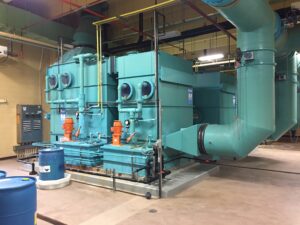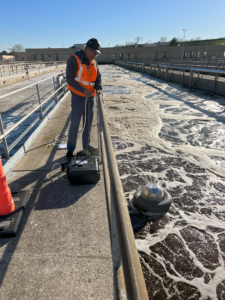What It Really Takes to Neutralize Ammonia Odor in Large-Scale Operations
 Ammonia odor is a common challenge in many industrial and municipal settings. Wastewater treatment plants, food processing facilities, and solid waste operations all deal with ammonia emissions. These odors can create complaints from nearby communities and lead to regulatory violations if not managed properly.
Ammonia odor is a common challenge in many industrial and municipal settings. Wastewater treatment plants, food processing facilities, and solid waste operations all deal with ammonia emissions. These odors can create complaints from nearby communities and lead to regulatory violations if not managed properly.
Controlling ammonia odor takes more than just basic treatment. It requires a detailed understanding of how ammonia behaves, what systems work best, and how to apply those systems in real-world settings. At Webster Environmental Associates (WEA), we’ve helped clients across different industries take control of ammonia odors using strategies backed by data and practical experience.
Where Ammonia Odors Come From
Ammonia forms when nitrogen-rich materials break down. In wastewater treatment plants, this can happen in the headworks, sludge processing areas, or during aeration. In food processing, ammonia is often released during protein breakdown or when cleaning agents mix with organic matter. Solid waste sites also generate ammonia as organic material decomposes.
Ammonia is especially difficult to control because of its chemical properties. It is water-soluble, which means it can move between the air and water phases easily. It also has a strong, sharp smell that can be noticed even at low concentrations. If not treated correctly, ammonia emissions can spread quickly and lead to health concerns or compliance problems.
Methods to Neutralize Ammonia Odor
There are several ways to treat ammonia odor, and the right method depends on the source and strength of the emissions. At WEA, we look at all available options before recommending a treatment method.
Some facilities use physical capture systems like enclosures and air collection ducts. These systems help contain the odor and direct it to a treatment unit. This step is often the first part of an odor control strategy.
Chemical treatment is one of the most common approaches. Chemical scrubbers use acid-based solutions to neutralize ammonia in the air. These systems are effective, especially in places with high concentrations. Hydrogen peroxide can also be used, either alone or as part of a multi-stage system, to oxidize ammonia and reduce odors.
Biological treatment, such as biofilters or biotrickling scrubbers, is another option. These systems use microorganisms to break down ammonia into non-odorous byproducts. They are especially useful in facilities with steady odor loads and lower emission peaks.
Some operations benefit from using more than one method. Multi-stage scrubbers can treat different types of odors in sequence, combining acid scrubbing for ammonia with other processes to remove hydrogen sulfide or VOCs.
The Importance of System Design and Data
 A system that works well in one location may not work in another. That’s why a proper evaluation is so important before choosing a treatment method.
A system that works well in one location may not work in another. That’s why a proper evaluation is so important before choosing a treatment method.
At WEA, we always begin with a site-specific assessment. This often includes air sampling, liquid sampling, and an analysis of where the odors are coming from. We look at concentration levels, flow rates, facility layout, and environmental factors like temperature and humidity.
We also use air dispersion modeling to understand how odors move through the air around a facility. This helps us figure out which areas need the most attention and how effective a proposed system will be before it’s installed.
Designing a successful system means looking at more than just the treatment equipment. Duct sizing, fan selection, and system layout all affect how well the odor control works. If airflow is uneven or if emissions aren’t collected properly, even a good scrubber or biofilter won’t solve the problem.
WEA’s Proven Strategies in Action
At Webster Environmental Associates, we’ve worked with many clients facing difficult ammonia odor challenges. In one case, a wastewater treatment plant was receiving complaints from nearby neighborhoods despite having an existing scrubber system in place. After conducting a full odor study, we found that ammonia levels were higher than expected at specific process points, and the current system wasn’t built to handle that load.
We recommended changes to the air capture system, replaced the scrubber with a two-stage unit, and optimized the chemical feed system for better ammonia neutralization. After these changes, odor complaints dropped significantly, and the facility stayed within compliance limits.
In another project, we helped a food processing facility that needed to reduce ammonia odors without increasing their use of hazardous chemicals. We installed a biofilter with optimized media and helped the client monitor and adjust moisture and airflow over time. The system met odor goals while keeping operational costs low.
Let WEA Help You Take Control
Neutralizing ammonia odor at scale isn’t about guesswork. It takes careful planning, proper testing, and a system designed to fit your facility’s needs. At WEA, we combine practical experience with advanced tools to help industrial and municipal clients manage ammonia emissions effectively.
If your facility is struggling with ammonia odor or if you’re planning an upgrade or new build, we’re here to help. Our team can evaluate your current systems, identify improvements, and develop a plan that delivers real results. Contact Webster Environmental Associates to start building a better odor control strategy today.
